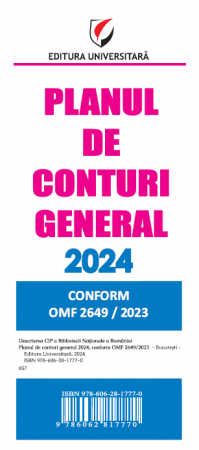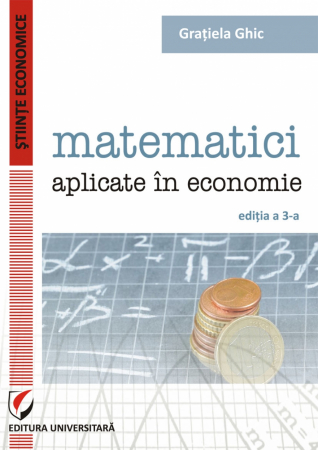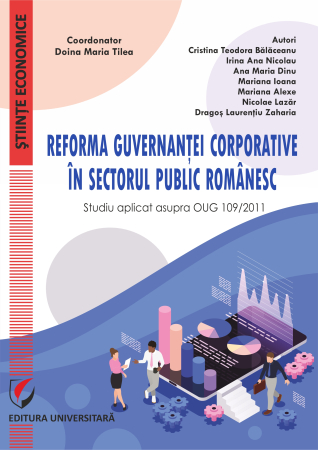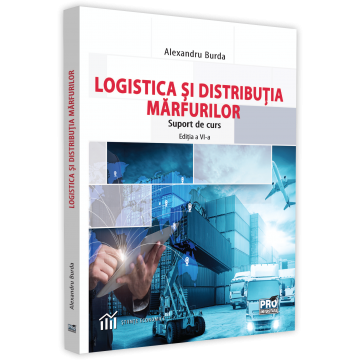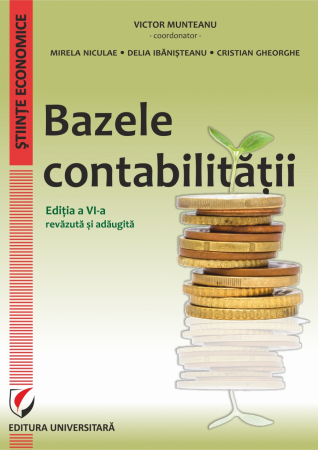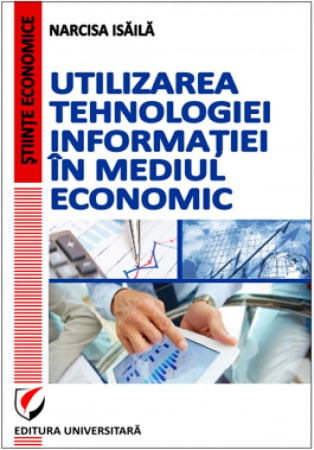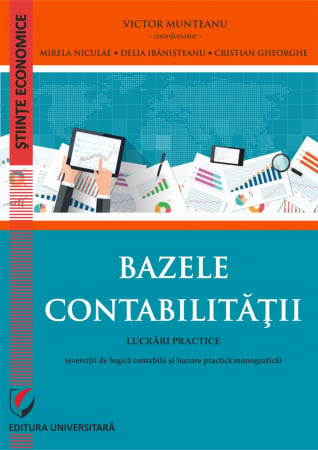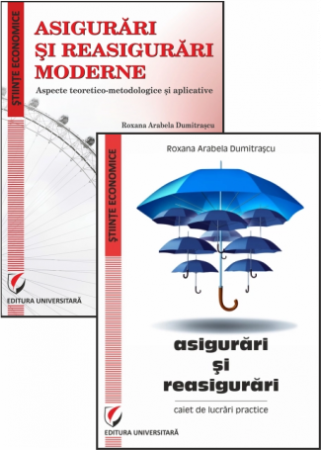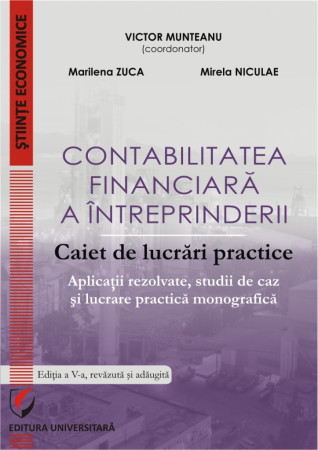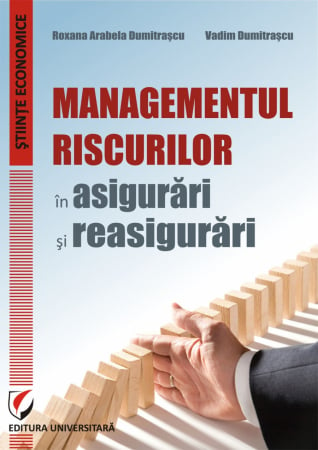Manuscript proposals: [email protected] / 0745 204 115 //// Tracking orders Individuals / Sales: 0745 200 357 / Orders Legal entities: 0721 722 783
Publisher: Editura Universitară
Author: Gheorghita Caprarescu, Daniela Georgiana Stancu, Georgiana Aron, Daniel Stefan Laurentiu
ISBN: 978-606-591-754-5
DOI: 10.5682/9786065917545
Publisher year: 2013
Edition: I
Pages: 212
Product Code:
9786065917545
Do you need help?
0745 200 357
- Description
- Download (1)
- Authors
- Content
- More details
- Reviews (0)
The evolution of the science and practice of management imposed a reorientation of the preoccupations from the material factors, which in the vision of the classical school held the most important role, towards the human factor. Towards the end of the 8th century, management specialists come to the conclusion that, in an organization, the individual is more than a simple component of production factors and the management of "human resources" surpasses the rigid principles of managing the company's assets. to highlight a series of features that escape the economic calculus.
The most recent theories of the organization consider these to be "interdependent systems of human beings." People are considered one of the essential resources needed to achieve the goals of organizations but a very special resource, because they not only work for the organization but they are the organization. The arguments that can be brought are multiple: people are the ones who set goals, for themselves and for others, for the organization and for society, they are the ones who translate them into life. Their attitudes, mentalities and behavior can affect the structure, image, success of an organization. For the organization that sees in the people who inspire it only the impersonal indicator "the number and structure of employees", human resources management remains a fashionable term that replaces the old name of the department and personnel activity, respectively. The organization that understands that man is not the annex of the car, is not "the faceless name stuck in the rabbit cage of the organization chart" but an individuality marked by needs and interests, holding a potential that can be developed and valued for the common benefit, human resources management it acquires an obvious meaning and the value of the creative resource.
The most recent theories of the organization consider these to be "interdependent systems of human beings." People are considered one of the essential resources needed to achieve the goals of organizations but a very special resource, because they not only work for the organization but they are the organization. The arguments that can be brought are multiple: people are the ones who set goals, for themselves and for others, for the organization and for society, they are the ones who translate them into life. Their attitudes, mentalities and behavior can affect the structure, image, success of an organization. For the organization that sees in the people who inspire it only the impersonal indicator "the number and structure of employees", human resources management remains a fashionable term that replaces the old name of the department and personnel activity, respectively. The organization that understands that man is not the annex of the car, is not "the faceless name stuck in the rabbit cage of the organization chart" but an individuality marked by needs and interests, holding a potential that can be developed and valued for the common benefit, human resources management it acquires an obvious meaning and the value of the creative resource.
-
Human Resources Management
Download
GHEORGHITA CAPRARESCU
DANIELA GEORGIANA STANCU
DANIEL STEFAN LAURENTIU
GEORGIANA ARON
DANIELA GEORGIANA STANCU
DANIEL STEFAN LAURENTIU
GEORGIANA ARON
Chapter 1
Fundamental concepts of human resources / 9
1.1 - The various conceptions regarding human resources / 10
1.2 - Defining human resources / 12
1.3 - Characteristics of human resources / 13
Chapter 2
The conceptual framework of Human Resource Management / 15
2.1 - Defining Human Resource Management / 16
2.2 - Specific goals and objectives of Human Resources Management / 19
2.3 - Content of Human Resources Management / 20
Chapter 3
The conceptual and practical evolution of Human Resources Management / 22
3.1 - Staff administration stage / 23
3.2 - Personnel Management Stage / 27
3.3 - Entrepreneurial Stage of Human Resources Management / 28
3.4 - Post-entrepreneurial stage of Human Resources Management / 33
3.5 - Stage of Strategic Management of Human Resources / 34
Chapter 4
Trends of human resources management in the conditions of market globalization / 36
4.1 - Globalization and its impact on the international management of human resources / 36
4.2 - Calculating the return on investments in human resources (ROI) / 41
4.3 - Models of strategic human resources management in the context of globalization / 51
Chapter 5
Strategic planning of human resources / 60
5.1 - Definition, importance and particularities of strategic planning of human resources / 60
5.2 - Stages of strategic planning of human resources / 63
5.3 - Methods and techniques used in strategic planning of human resources / 68
Chapter.6
Human resources organization / 73
6.1 - Job analysis and job definition / 79
6.2 - Station design / 90
6.3 - Post redesign / 96
6.4 - Job evaluation / 102
Chapter 7
Recruitment, selection and professional insertion / 106
7.1 - Recruitment of human resources: definition, premises, content / 107
7.2 - Selection of human resources: definition, content, methods / 117
7.3 - Professional and social insertion / 127
Chapter 8
Training and development of human resources / 130
8.1 - The conceptual framework of professional training / 130
8.2 - Myths of vocational training programs / 137
8.3 - Human resources development / 146
Chapter 9
Career management / 152
9.1 - The career concept / 152
9.2 - Career types and career anchors / 158
9.3 - Career management / 162
Chapter 10
Motivation of human resources / 172
10.1 - Definition and components of motivation / 172
10.2 - Types of motivation / 174
10.3 - The main motivational theories / 177
Chapter 11
Management of professional competencies / 186
11.1 - Professional competence: meanings and definitions / 186
11.2 - Factors of professional competence / 188
11.3 - Types of professional competences / 191
Chapter 12
Rewards management / 193
12.1 - Definition and components of the reward system / 193
12.2 - Salary: the fundamental component of the reward system / 197
12.3 - Influencing factors and principles of the reward system / 203
Bibliography / 209
Fundamental concepts of human resources / 9
1.1 - The various conceptions regarding human resources / 10
1.2 - Defining human resources / 12
1.3 - Characteristics of human resources / 13
Chapter 2
The conceptual framework of Human Resource Management / 15
2.1 - Defining Human Resource Management / 16
2.2 - Specific goals and objectives of Human Resources Management / 19
2.3 - Content of Human Resources Management / 20
Chapter 3
The conceptual and practical evolution of Human Resources Management / 22
3.1 - Staff administration stage / 23
3.2 - Personnel Management Stage / 27
3.3 - Entrepreneurial Stage of Human Resources Management / 28
3.4 - Post-entrepreneurial stage of Human Resources Management / 33
3.5 - Stage of Strategic Management of Human Resources / 34
Chapter 4
Trends of human resources management in the conditions of market globalization / 36
4.1 - Globalization and its impact on the international management of human resources / 36
4.2 - Calculating the return on investments in human resources (ROI) / 41
4.3 - Models of strategic human resources management in the context of globalization / 51
Chapter 5
Strategic planning of human resources / 60
5.1 - Definition, importance and particularities of strategic planning of human resources / 60
5.2 - Stages of strategic planning of human resources / 63
5.3 - Methods and techniques used in strategic planning of human resources / 68
Chapter.6
Human resources organization / 73
6.1 - Job analysis and job definition / 79
6.2 - Station design / 90
6.3 - Post redesign / 96
6.4 - Job evaluation / 102
Chapter 7
Recruitment, selection and professional insertion / 106
7.1 - Recruitment of human resources: definition, premises, content / 107
7.2 - Selection of human resources: definition, content, methods / 117
7.3 - Professional and social insertion / 127
Chapter 8
Training and development of human resources / 130
8.1 - The conceptual framework of professional training / 130
8.2 - Myths of vocational training programs / 137
8.3 - Human resources development / 146
Chapter 9
Career management / 152
9.1 - The career concept / 152
9.2 - Career types and career anchors / 158
9.3 - Career management / 162
Chapter 10
Motivation of human resources / 172
10.1 - Definition and components of motivation / 172
10.2 - Types of motivation / 174
10.3 - The main motivational theories / 177
Chapter 11
Management of professional competencies / 186
11.1 - Professional competence: meanings and definitions / 186
11.2 - Factors of professional competence / 188
11.3 - Types of professional competences / 191
Chapter 12
Rewards management / 193
12.1 - Definition and components of the reward system / 193
12.2 - Salary: the fundamental component of the reward system / 197
12.3 - Influencing factors and principles of the reward system / 203
Bibliography / 209
The evolution of the science and practice of management imposed a reorientation of the preoccupations from the material factors, which in the vision of the classical school held the most important role, towards the human factor. Towards the end of the 8th century, management specialists come to the conclusion that, in an organization, the individual is more than a simple component of production factors and the management of "human resources" surpasses the rigid principles of managing the company's assets. to highlight a series of features that escape the economic calculus.
The most recent theories of the organization consider these to be "interdependent systems of human beings." People are considered one of the essential resources needed to achieve the goals of organizations but a very special resource, because they not only work for the organization but they are the organization. The arguments that can be brought are multiple: people are the ones who set goals, for themselves and for others, for the organization and for society, they are the ones who translate them into life. Their attitudes, mentalities and behavior can affect the structure, image, success of an organization. For the organization that sees in the people who inspire it only the impersonal indicator "the number and structure of employees", human resources management remains a fashionable term that replaces the old name of the department and personnel activity, respectively. The organization that understands that man is not the annex of the car, is not "the faceless name stuck in the rabbit cage of the organization chart" but an individuality marked by needs and interests, holding a potential that can be developed and valued for the common benefit, human resources management it acquires an obvious meaning and the value of the creative resource.
The evolution of the conceptions regarding the place and the role of man in the organization can be highlighted by the multitude of terms used in time:
- labor force, a concept found in political economy as the primary factor, originating from production, the active and determining factor. Framed in economic theory in the category of main factors of production (along with capital and nature) the staff of the organization was interested only in terms of capacity and ability to perform - following strict rules and procedures - certain operations and activities arising from the decisions of others. This globalizing vision reflects an attitude typical of Taylorism: the entire staff of the organization was treated indiscriminately, regardless of personality, aspirations, individual potential because what mattered was only "labor", its ability to produce utilities. The vision on the labor force, the component of the production factors, is marked by the evaluation from the point of view of the costs that the use in the production supposes. The accounting perspective on the production costs excludes any other considerations of human valorization, the target being that of reducing the salary expenses in order to be able to increase the profit. In some specialized works, however, the concept of labor force seems to include human resources: “Labor force recruitment calls for the existence of a permanent recruitment strategy, which provides the necessary human resources to economic agents through a current and perspective";
- personally, it is a global concept that designates the totality of people employed in an organization. The concept refers especially to the personnel insurance and administration activities, considered another resource together with the natural and technical-technological resources. In such an approach, like raw materials, for example, man can be purchased, sorted and used in accordance with the requirements of technological processes, being one of the necessary accessories for the company's activities;
- intellectual capital, consists of «accumulations and knowledge flows that an organization has. These can be considered intangible resources which, together with the tangible resources - money and material assets - give the total or market value of a company ». The concept of intellectual capital involves three components:
a. human capital, given by the human factor in the organization, respectively, the combination of intelligence, skills and competent experience that gives the organization its identity. The concept was promoted by the American specialist T. W. Schultz since 1961, developed and defined later by the emphasis on investing in this type of capital. "It is considered that all human abilities are either innate or acquired. Attributes that have value and can be developed through adequate investment make up human capital »;
b. social capital - is the expression of social life that arises in any organization. Interpersonal relationships inside and outside the organization generate information accumulation and knowledge flows that constitute a relational capital, a adding to intangible resources;
c. organizational capital - the institutionalized set of competencies in the possession of an organization, structured and stored in databases, manuals, rules, procedures. They are competencies over which the organization owns the intellectual property right, even if at their origin is the whole human factor.
Intellectual capital is not only a complex and composite concept but also very different from the classical view of economics on capital made up of tangible resources. Intellectual capital shows that although individuals - human capital - are those who generate, multiply, accumulate and retain knowledge, they are amplified by the relationships between individuals - social capital - knowledge systematized and valued by the organization's ability to retain and use capital, respectively. organizational. If the attribute of mobility can be attached to human capital, because "people come and go", organizational capital can be attributed stability because "organizations keep knowledge over time". As one of the specialists in the field states, “organizational capital remains in place when the employee leaves; human capital is the intellectual asset that goes home with the employee every night ”.
The most recent theories of the organization consider these to be "interdependent systems of human beings." People are considered one of the essential resources needed to achieve the goals of organizations but a very special resource, because they not only work for the organization but they are the organization. The arguments that can be brought are multiple: people are the ones who set goals, for themselves and for others, for the organization and for society, they are the ones who translate them into life. Their attitudes, mentalities and behavior can affect the structure, image, success of an organization. For the organization that sees in the people who inspire it only the impersonal indicator "the number and structure of employees", human resources management remains a fashionable term that replaces the old name of the department and personnel activity, respectively. The organization that understands that man is not the annex of the car, is not "the faceless name stuck in the rabbit cage of the organization chart" but an individuality marked by needs and interests, holding a potential that can be developed and valued for the common benefit, human resources management it acquires an obvious meaning and the value of the creative resource.
The evolution of the conceptions regarding the place and the role of man in the organization can be highlighted by the multitude of terms used in time:
- labor force, a concept found in political economy as the primary factor, originating from production, the active and determining factor. Framed in economic theory in the category of main factors of production (along with capital and nature) the staff of the organization was interested only in terms of capacity and ability to perform - following strict rules and procedures - certain operations and activities arising from the decisions of others. This globalizing vision reflects an attitude typical of Taylorism: the entire staff of the organization was treated indiscriminately, regardless of personality, aspirations, individual potential because what mattered was only "labor", its ability to produce utilities. The vision on the labor force, the component of the production factors, is marked by the evaluation from the point of view of the costs that the use in the production supposes. The accounting perspective on the production costs excludes any other considerations of human valorization, the target being that of reducing the salary expenses in order to be able to increase the profit. In some specialized works, however, the concept of labor force seems to include human resources: “Labor force recruitment calls for the existence of a permanent recruitment strategy, which provides the necessary human resources to economic agents through a current and perspective";
- personally, it is a global concept that designates the totality of people employed in an organization. The concept refers especially to the personnel insurance and administration activities, considered another resource together with the natural and technical-technological resources. In such an approach, like raw materials, for example, man can be purchased, sorted and used in accordance with the requirements of technological processes, being one of the necessary accessories for the company's activities;
- intellectual capital, consists of «accumulations and knowledge flows that an organization has. These can be considered intangible resources which, together with the tangible resources - money and material assets - give the total or market value of a company ». The concept of intellectual capital involves three components:
a. human capital, given by the human factor in the organization, respectively, the combination of intelligence, skills and competent experience that gives the organization its identity. The concept was promoted by the American specialist T. W. Schultz since 1961, developed and defined later by the emphasis on investing in this type of capital. "It is considered that all human abilities are either innate or acquired. Attributes that have value and can be developed through adequate investment make up human capital »;
b. social capital - is the expression of social life that arises in any organization. Interpersonal relationships inside and outside the organization generate information accumulation and knowledge flows that constitute a relational capital, a adding to intangible resources;
c. organizational capital - the institutionalized set of competencies in the possession of an organization, structured and stored in databases, manuals, rules, procedures. They are competencies over which the organization owns the intellectual property right, even if at their origin is the whole human factor.
Intellectual capital is not only a complex and composite concept but also very different from the classical view of economics on capital made up of tangible resources. Intellectual capital shows that although individuals - human capital - are those who generate, multiply, accumulate and retain knowledge, they are amplified by the relationships between individuals - social capital - knowledge systematized and valued by the organization's ability to retain and use capital, respectively. organizational. If the attribute of mobility can be attached to human capital, because "people come and go", organizational capital can be attributed stability because "organizations keep knowledge over time". As one of the specialists in the field states, “organizational capital remains in place when the employee leaves; human capital is the intellectual asset that goes home with the employee every night ”.
If you want to express your opinion about this product you can add a review.
write a review

6359.png)
![Human Resources Management [1] Human Resources Management [1]](https://gomagcdn.ro/domains/editurauniversitara.ro/files/product/large/managementul-resurselor-umane-1226-297970.jpg)
